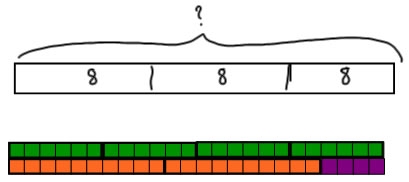In recent years, the procedure for introducing first complementary foods has undergone many changes. Moms are at a loss as to how many months a child can be fed and what recommendations to follow: to start feeding the baby with vegetables, as advised by the WHO or the Russian Academy of Medical Sciences, or to introduce fermented milk products into the baby's diet first, based on the authoritative opinion of Dr. Komarovsky. Some parents even listen to grandmothers who convince them to feed the baby with porridge right away - this will be healthier. What food to give first and how much it will be required at the beginning of complementary feeding, this article will tell.

The first acquaintance with adult food
Why do we need feeding schemes
The complementary feeding scheme was created by professionals - professors who have been studying the issues of baby nutrition for a long time.
Two schemes are known:
- Developed by the World Health Organization (WHO);
- Developed by the Children's Nutrition Department of the GUNII RAMS under the leadership of Academician I.Ya. Horse in 1999.
These developments will help parents correctly introduce new foods to their babies. All worries and difficulties will recede, and the baby's acquaintance with this or that product will take place in the most comfortable conditions for everyone.
WHO complementary feeding recommendations
The WHO table on the introduction of complementary foods for babies has a number of explanatory tips:
- The kid does not need any other food, except milk or an adapted formula, up to six months. From 6 months, the baby and his gastrointestinal tract are ready to eat new food, which will provide him with full development and growth.
- Breastfeeding should be maintained as long as possible - at least up to two years. After two years, the guards are usually gradually reduced. Mom should feed milk along with the introduction of other food into the diet.
- When a child is introduced to a new food, parents need to be as consistent and patient as possible. You cannot force the baby, you should show care and sensitivity. Also, do not force him to eat a large amount of food. The portion depends on the age of the baby, its weight and activity.
- Complementary feeding starts with a small portion. If a negative reaction does not arise, and the baby gets used to this product, the portion can be increased.
- At first, the consistency of the product is liquid, then it becomes harder. Also, the dishes subsequently become more varied.
- Serving size over time begins to prevail over the amount of mother's milk. At 1.5-2 years, the number of feedings should be 3-4 times a day.
- An infant's nutrition should be balanced, contain vitamins and minerals. A good child's menu is the presence of cereals, vegetables, fruits, eggs, meat and fish in it.
- It is necessary to gradually increase the amount of water drunk by the child, offering it before meals and an hour after. The bottle or glass of liquid should be visible to the baby.

Food introduction table for formula-fed babies
Note! There are no strict guidelines or strict restrictions in WHO. But the sequence of the introduced products is given specifically, taking into account the collected information from pediatricians, specialists in baby nutrition.
Benefits of complementary foods according to the scheme
All products and their dosage are indicated in the complementary feeding scheme from 6 months. According to the developers, if you follow this plan, the likelihood of dyspeptic manifestations and subsequent allergic reactions decreases.
Additional Information. It is worth remembering the individuality of each child. Some pediatricians question the universality of such tables, since they dispute the possibility of a baby eating 180 grams of food on the seventh day of complementary foods at the age of six months. This figure appears in the diagram. Even if the baby is not breastfed and not artificially fed, he will not be able to overpower such a portion.
When to start complementary feeding
From how many months can you start giving your baby complementary foods? According to most pediatricians, this time is 6 months. The child should develop normally, gain weight.
Important! As a rule, at this time the baby should already sit down. This skill is often highlighted as an indicator that the baby is already ready to get acquainted with new food. However, the most important sign for the start of complementary feeding is the appearance of the first teeth - this indicates the readiness of the gastrointestinal tract to receive food other than mother's milk or mixture.
In rare cases, pediatricians recommend complementary foods from 4 months, pointing out the cause of poor weight gain. In no case should you rush with complementary foods. At 4 months, children are not ready to try new food - the stomach is immature, which will affect intestinal disorders, restless sleep in the baby and manifestations of allergies.
Note! If the child does not gain weight well, you should find the cause that caused this symptom, and eliminate it as soon as possible.
Complementary feeding on artificial and breastfeeding
Usually, bottle-fed children are ready for complementary foods a little earlier - starting at 5 months. On breastfeeding, the introduction of new products falls on six months, not earlier.
There are 2 types of the child's readiness for new food:
- Psychological. The child begins to be interested in what adults eat, wants to try everything.

Nutritional Interest in Adult Food
- Physiological. It is associated with the characteristics of the child's body and the need to expand the diet so that the baby receives more nutrients.
Physiological readiness is manifested in:
- the baby sits or begins to sit down;
- he can hold his head confidently and alone;
- feedings became frequent, as if the crumb no longer eats only milk;
- the reflex of pushing food out of the tongue is weakened;
- the baby has gained 2 times in weight since birth.
Complementary feeding scheme
The feeding scheme for each child is strictly individual, so each mother herself chooses which plan to follow.
Usually the rules are as follows:
- start complementary foods with white and green vegetables: zucchini, broccoli, cauliflower;
- then add porridge;
- after - meat and vegetable, butter;
- at the very end - fruit.
After this base, they begin to add orange and red vegetables, potatoes. Cottage cheese and dairy products, fish - by the year.
Additional Information. Doctor Komarovsky recommends starting acquaintance with a new food with kefir, after a week give cottage cheese. Then - porridge, from eight months - vegetables.
Product name and complementary foods by months to a year
| Product | Age (months) | ||||||
|---|---|---|---|---|---|---|---|
| 6 | 7 | 8 | 9 | 10 | 11 | 12 | |
| Vegetables (puree) | From 5 gr. | Up to 150 gr. | Up to 170 gr. | Up to 180 gr. | 200 gr. | 200 gr. | 200 gr. |
| Fruit (puree) | Start from 5 gr. | 60 | 80 | 90 | 100 | 100 | |
| Porridge | 50 gr. | 100 | 150 | 180 | 200 | 200 | |
| Cottage cheese | From 5 gr. | Up to 30 gr. | 50 | ||||
| Kefir | 100 g | 200 | 200 | ||||
| Meat (puree) | From 5 gr. | 30 | 50 | 70 | 70 | ||
| Fish (puree) | From 5 gr. | ||||||
| Bread | From 5 gr. | 5 | 5 | 10 | 10 | ||
| Drying, crackers | From 5 gr. | 5 | 5 | 10 | |||
| Vegetable oil | From 3 gr. | 3 | 3 | 5 | 5 | 6 | |
| Butter | From 3 gr. | 4 | 5 | 5 |

Scheme of introducing new products to babies from the RAMS
Features of complementary foods with industrial products
For complementary foods, you can use home-made dishes, you can buy special jars of mashed potatoes made by industrial production.
Homemade dishes are superior to purchased jars in terms of their organoleptic properties and preservation of vitamins and microelements. However, those dishes that were prepared at home do not contain the required amount of iron, zinc, vitamins A, E and B. That is why domestic nutritionists recommend that mothers who have the opportunity to purchase canned puree use it.

Canned vegetable puree for baby food
What are the advantages of industrial products:
- Raw materials are environmentally friendly, which is safe for the baby's nutrition;
- The composition is balanced, the puree contains vitamins and active micronutrients, pre, - and probiotics;
- Various raw materials that are not readily available at home;
- The degree of processing and grinding of raw materials is optimal for the age of the child, the characteristics of his chewing apparatus and digestive system;
- The packaging is hermetic, due to which the shelf life of an unopened jar is very long, even at room temperature;
- Preparing such dishes is easy and quick - just warm up or dilute with water to the desired consistency.
Do not forget about the feeding rules:
- If the crumb refuses to eat a new dish, then it is better to try again after 1-2 weeks;
- The volume of food increases gradually. But there is no need to deny the child one extra spoon. Food interest prevails over other factors;
- You need to be interested in food, and not discourage the desire to try it, which is why it is worth watching the baby, satisfying his needs and preferences;
- Always monitor the baby's reaction to each product: whether there is an allergy, rash, constipation, or, conversely, diarrhea. If an undesirable symptom appears, then the acquaintance must be postponed until the baby's condition is normalized.
It is always worth analyzing which baby is giving signals. It is better to keep a diary of his food, noting all reactions to a particular product. With a little practice and dexterity, there will be no problem with complementary foods.



